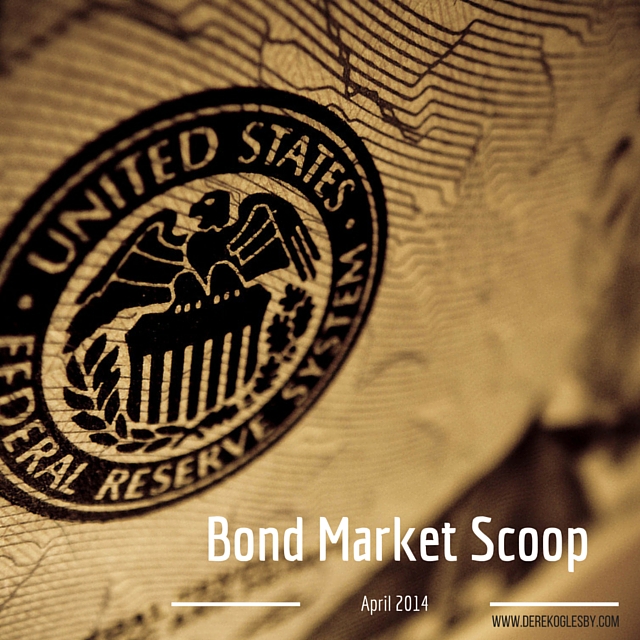
The Fed
As expected, the Federal Reserve (Fed), led by new Chair Janet Yellen, announced that it will keep interest rates low for a considerable period and continue to reduce the monthly pace of bond purchases – this time by $10 billion, to $55 billion. Interestingly, the Fed also stated that it would remove the link between the benchmark rate and the 6.5% unemployment target, giving itself more room to keep rates low for a longer period of time.
Yield Curve
The U.S. Treasury yield curve steepened in the short-end, but flattened in the long-end last month due to concerns of rising short-term rates. The yield spread between the 3mo-Tbill and 5-year Tsy increased by 0.23% while the 5-year and 30-year spread fell by 0.24%. Expectations of the Fed raising short-term interest rates grew last month as more Fed officials predicted the benchmark rate would rise at least to 1% at the end of 2015 and 2.25% by the end of 2016.
Interesting Observation
Interest Rate Divergence, 5-year vs. 30-year Treasury – Upon the Fed’s hawkish comments last month, the yield curve quickly flattened with short-term rates rising and long-term rates falling. The spread between 5-year notes and 30-year bonds hit its lowest level since 2009.
Monthly Wrap-up
Federal Reserve Chair Janet Yellen had a “wake-up call” after speaking at a post FOMC meeting press conference last month. Yellen was asked how long the Fed would wait after the tapering ends before it would raise the benchmark rate. She stated: “So the language that we used in the statement is ‘considerable period.’ So I, you know, this is the kind of term it’s hard to define. But, you know, probably means something on the order of around six months, that type of thing.” Although Yellen added many qualifiers, “six-months” was the only thing investors heard and the markets sold off consequently. The pace of the Fed’s bond purchases is expected to stop in October or November and “six months” after that would be April or May 2015. This is sooner than what the market anticipated for the beginning of the Fed’s rate hikes. Rookie mistake? Maybe, we’ll see.
Economic data was mixed last month as inflation remains dormant. Housing and manufacturing were flat while consumer confidence rebounded from February. It has been debated that much of the recent weak economic data was impacted by the unseasonably cold weather. Greater attention will likely be focused on this month’s data to assess the prospects for a post weather-related rebound.
